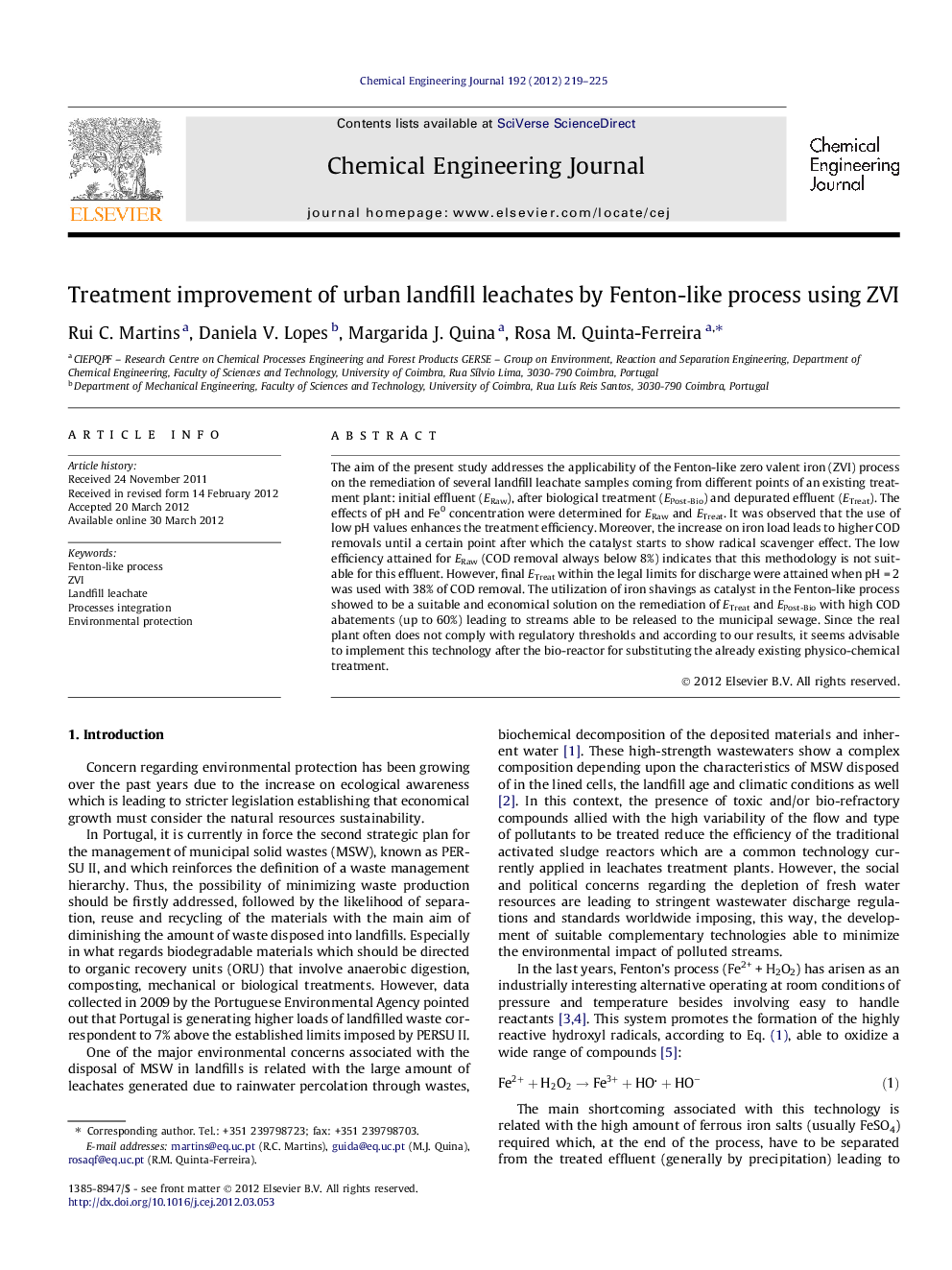| Article ID | Journal | Published Year | Pages | File Type |
|---|---|---|---|---|
| 149800 | Chemical Engineering Journal | 2012 | 7 Pages |
The aim of the present study addresses the applicability of the Fenton-like zero valent iron (ZVI) process on the remediation of several landfill leachate samples coming from different points of an existing treatment plant: initial effluent (ERaw), after biological treatment (EPost-Bio) and depurated effluent (ETreat). The effects of pH and Fe0 concentration were determined for ERaw and ETreat. It was observed that the use of low pH values enhances the treatment efficiency. Moreover, the increase on iron load leads to higher COD removals until a certain point after which the catalyst starts to show radical scavenger effect. The low efficiency attained for ERaw (COD removal always below 8%) indicates that this methodology is not suitable for this effluent. However, final ETreat within the legal limits for discharge were attained when pH = 2 was used with 38% of COD removal. The utilization of iron shavings as catalyst in the Fenton-like process showed to be a suitable and economical solution on the remediation of ETreat and EPost-Bio with high COD abatements (up to 60%) leading to streams able to be released to the municipal sewage. Since the real plant often does not comply with regulatory thresholds and according to our results, it seems advisable to implement this technology after the bio-reactor for substituting the already existing physico-chemical treatment.
► Fenton-like ZVI process was studied for the depuration of landfill leachates. ► Iron shavings showed high potential as catalyst in Fenton’s process. ► Fenton’s with iron shavings can properly replace the existing chemical treatment. ► Iron shavings maintain their activity during some reuses.
